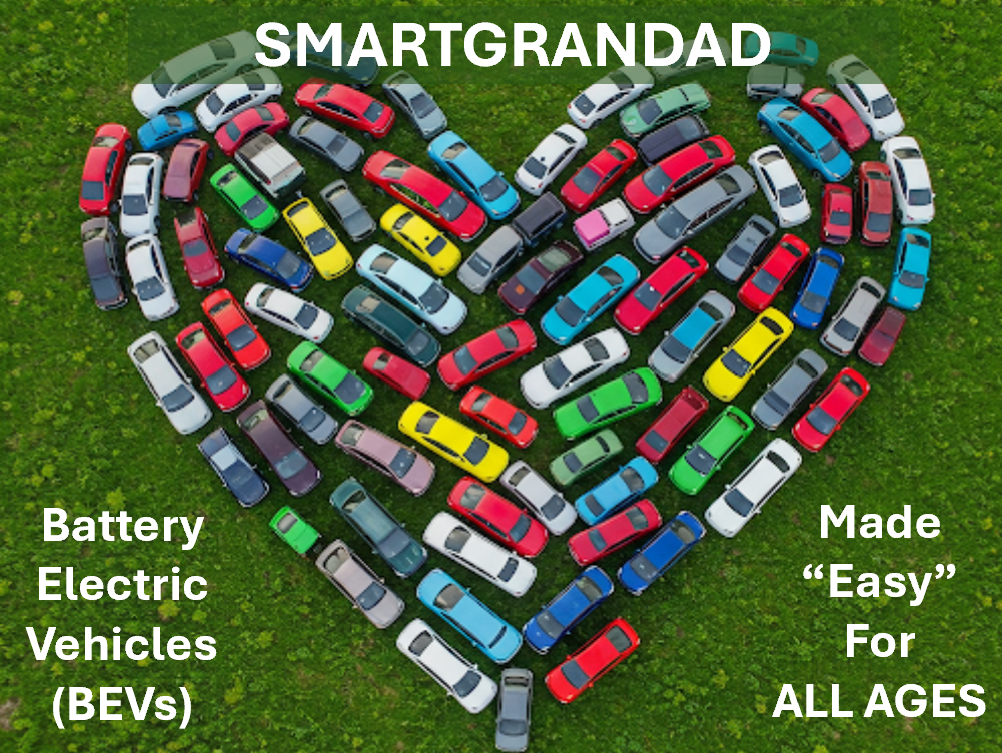POSTS > Opinions & Guides
“EASY BEV” GUIDE 4: What To Consider Regarding BEV Reliability & Warranties?
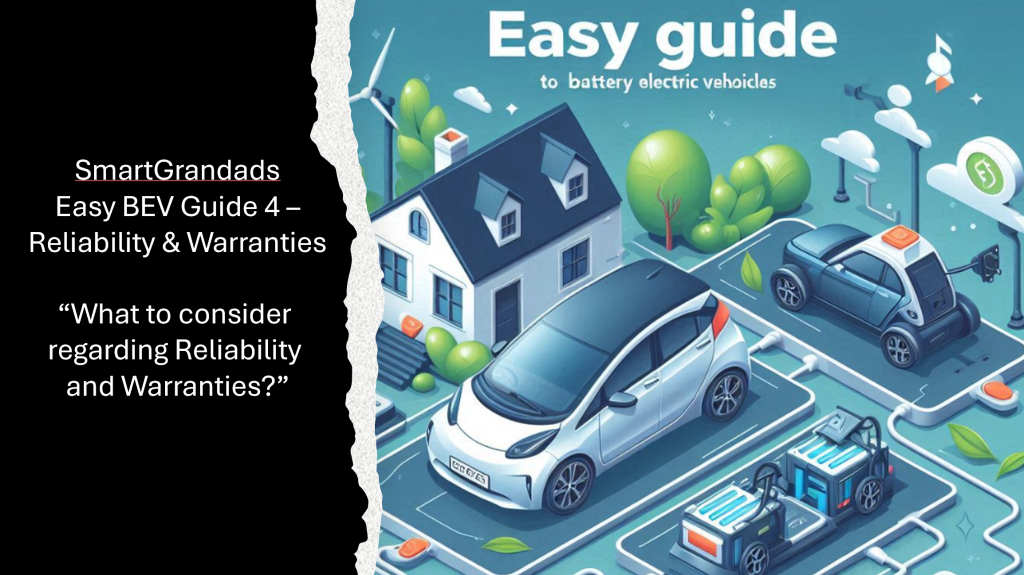
SmartGrandads "EASY BEV" Guides
Through a series of “EASY BEV” Guides, specifically aimed at potential and new Battery Electric Vehicles (BEV) owners, SmartGrandad will help remove any lingering fears.
SmartGrandad will give you some common sense, practical advice, making it easier to be informed about what BEVs are, how to choose which model is best for you.
With 6 plus years of driving different BEVs across Europe/UK and 30 years of delivering successful projects, I have plenty of Real World experience of assessing facts, dealing with challenges and reducing risks.
In SmartGrandads “EASY BEV” Guide 4, we will look at answering the question:
What to consider regarding Reliability & Warranties?
When you buy an EV, just like when you buy a fossil car, you expect that the manufacturer has ironed out all the faults. But just like fossil cars, some EV manufacturers are simply better than others. So its important to understand which cars are likely to have the most faults – things that will affect your use of the vehicle.
As most EVs have appeared in the last 3-4 years its hard to provide a definitive, universally agreed-upon reliability ranking from best to worst for all BEV makes and models. When buying a secondhand BEV reliability/ warranties are even more important
To keep things relatively simple, we have created 3 reliability groupings;
1 Considered More Reliable: BEVs that have been around for a few years and where there are sufficient numbers on the road, showing that they have few problems.
2 Less Consistent Reliability: BEVs that have been around for a few years and where there are sufficient numbers that have had reported issues. When looking at such models, be aware that some issues exist.
3 Lower Reliability: BEVs where specific issues (multiple) have been reported. When looking a such models, you should check that the reported issues are not present or have been fixed by the manufacturer.
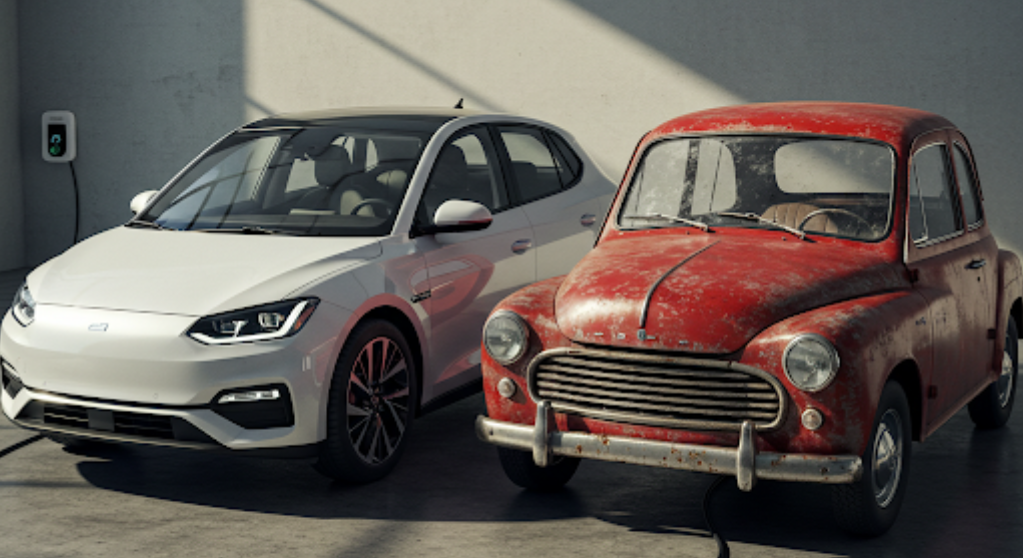
1 Generally Considered More Reliable:
- BMW i4: This model has been highlighted as one of the most reliable EVs in recent Consumer Reports surveys.
- Nissan Leaf: As one of the earlier mass-market EVs, the Leaf has a track record and has been noted for its reliability in some reports.
- Kia E-Niro Kia, as a brand, often scores well in reliability surveys, and the E-Niro has a very positive reputation for reliability.
- Hyundai Kona Electric: This model has also been mentioned as a reliable option in various reports.
- Tesla Model 3: While Tesla’s overall brand reliability can be debated, the Model 3 often appears as a reliable model in surveys.
2 Mixed or Less Consistent Reliability:
- Tesla (overall): While the Model 3 is often cited as reliable, some reports indicate that Tesla, as a brand, can have lower reliability scores compared to some other manufacturers, particularly for older models. Issues can include body hardware, paint, and fit and finish.
- Hyundai IONIQ 5: While praised for design and features, some owners have reported issues with fast charging and software.
- Kia EV6: Similar to the IONIQ 5 as they share a platform, the EV6 might have similar potential issues reported by some owners.
- Ford Mustang Mach-E: Some reports have placed the Mach-E lower in reliability rankings.
- Volkswagen ID.4: This model has faced some criticism regarding its software and electronics reliability.
3 Potentially Lower Reliability:
- Porsche Taycan: Surprisingly, some surveys have indicated a higher rate of problems for the Taycan, particularly related to air conditioning, battery, electrics, and bodywork.
- Vauxhall Corsa Electric (Opel Corsa-e): Some surveys have placed this model low in reliability rankings, with issues reported in air conditioning, battery, and electronics.
- MG4 EV: One report listed this as having a low reliability rating with various electrical, interior, and body issues reported.
- Tesla Model Y: Similar to the overall brand concerns, some surveys show the Model Y with lower reliability than the Model 3.
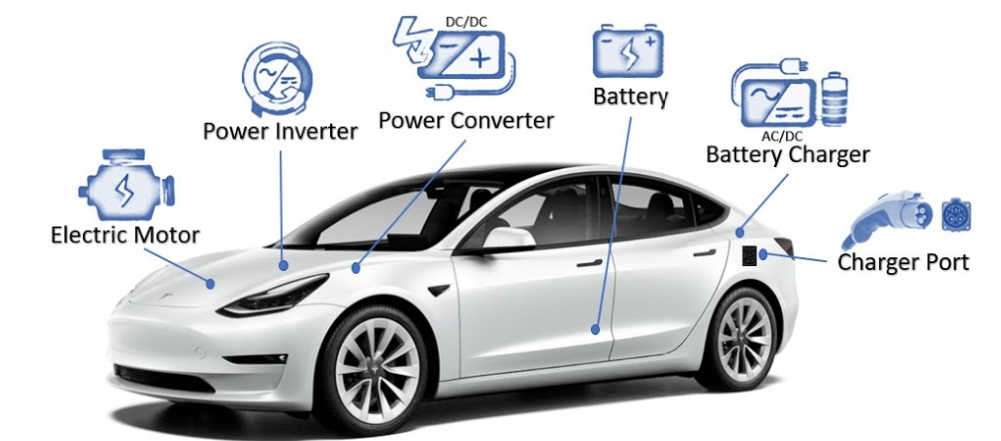
Important “Reliability” Considerations:
We have identified the Makes / Models to watch out for, but what are the key reliability factors to watchout for when searching for a BEV.
- Newer Models: Reliability data on very new models might be limited. Good to check if the main components have been used on other models. If not be prepared for some issues to be reported, and hopefully fixed with an update or recall.
- Software Issues: Many reported problems in modern EVs relate to software glitches and infotainment systems, which can often be addressed through Over The Air OTA updates. Check how regularly, the manufacturer makes OTA updates
- Driving Habits and Maintenance: As with any vehicle, reliability can be influenced by how the car is driven. Regular maintenance and ability for free OTA updates to Infotainment and powertrain issues.
- Regional Differences: Again as for any car, reliability ratings can sometimes vary between different regions due to factors like road conditions and usage patterns.
- Used vs. New: Reliability of used BEVs can differ significantly from new ones. One report indicated that although when new the Tesla Model 3 has good reliability, it is the least reliable used BEV in a German study, citing issues like brake and axle defects and lighting problems, potentially linked to maintenance.
- Factor in the reputation and availability of After-Sales service and parts for the brands you are considering. Long journeys to the garage and a long wait for parts can be very frustrating.
- Checkout the Length of the Manufacturers Warranty as an indicator of their confidence in the product and a safety net for potential issues.

Reliability of Chinese Brands in Europe & Uk.
As most Chinese makes are very new in Europe, there are few comprehensive, and long-term reliability statistics specifically for Chinese BEVs in Europe.
However, here are some insights:
- MG (SAIC):
- Reliability: Mixed reports. Some sources indicate slightly above-average reliability for the brand overall. However, a recent What Car? survey named MG as the least reliable used car brand in the UK, and the MG4 EV as the least reliable EV model in their survey, citing a high number of faults and slow repairs.
- Positive Aspects: Offers good value for money, and the MG HS SUV has received positive dependability reviews. They also offer a long warranty (typically 7 years), suggesting manufacturer confidence.
- BYD (Build Your Dreams):
- Reliability: Early reports are mixed. Some owners report hassle-free experiences, particularly with the battery technology (LFP batteries are considered safe and reliable). However, there have been reports of quality issues in models shipped to international markets, including Europe, the Middle East, and South Asia. Some owners have reported issues with DAB+ radio, poor FM/AM reception, and other electronic glitches.
- Positive Aspects: Strong battery technology (they are a major battery manufacturer), and some owners praise the smooth driving experience. Warranty terms in some regions (like the UK for the Seal) are quite good (8 years/125,000 miles on the battery).
- Nio:
- Reliability: Anecdotal evidence suggests software is still under development with some reported faults. Some owners praise the autopilot features, while others mention issues with cabin material quality and efficiency compared to other EVs. There are also reports of issues with service and the functionality of battery swap stations in some areas.
- Unique Features: Known for its battery-swapping technology and focus on a premium brand image. Software updates are ongoing.
- Ora (Great Wall Motors):
- Reliability: Initial impressions have been positive regarding the build quality.
- Focus: Known for the distinctive design of the Funky Cat/Good Cat.
- Lynk & Co (Geely):
- Reliability: Limited independent reliability data available specifically for Europe. Geely, the parent company, also owns Volvo, which generally has a good reliability reputation, which might suggest a baseline of quality.
- Positioning: Focuses on a subscription-based ownership model and a tech-forward approach.
- Xpeng:
- Reliability: Very limited long-term reliability data available in Europe as they are a newer entrant.
- Information in forums indicate Powertrain and Bodywork are good quality, however software features have been lagging behind. However with regular extensive OTA updates considerable improvements have been made.

Reliability is “relative”:
First, lets remember that although fossil cars have been around for 100 years, different manufacturers still have vastly different reliability standards. BEVs are still in their infancy and there are growing pains and advances in technology.
Legacy manufacturers have varying levels of reliability with their BEVs and some have been very slow to address BEV key features of Range & Charging Speeds.
Taking a general view, Korean and Chinese manufacturers have a better grip BEVs, German and French having varying success. In the US Tesla has, to now led, the way.
BEV Warranties
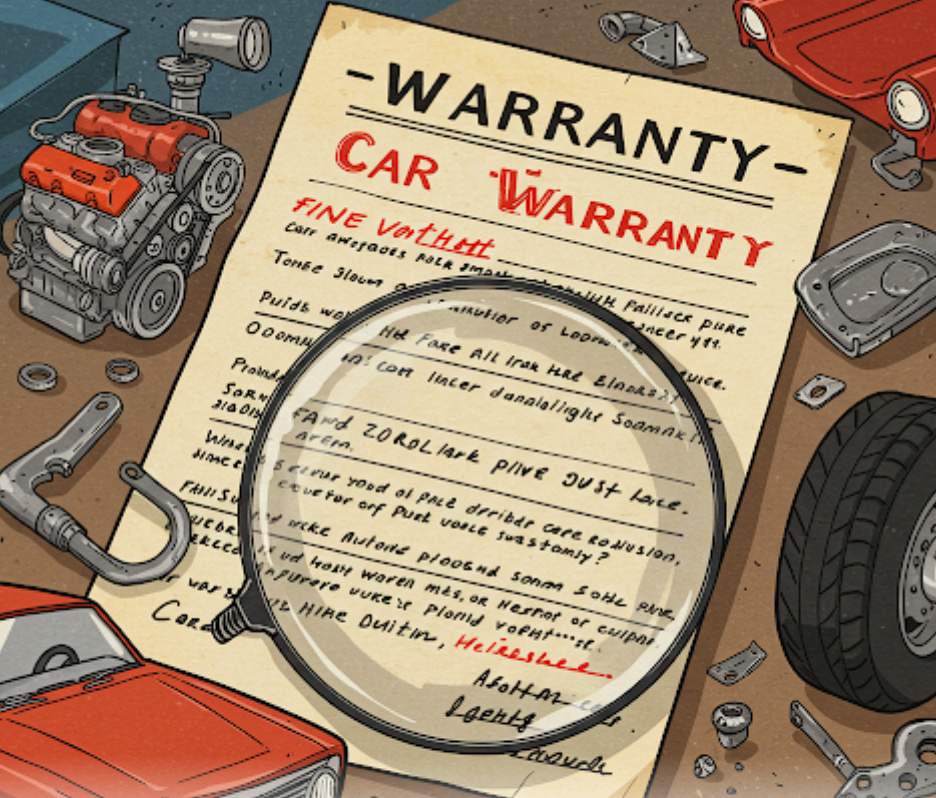
BEV Warranties in Europe and the UK
Dual Warranty Structure: Similar to global trends, BEVs in Europe and the UK typically come with two main warranties: a standard vehicle warranty and a specific warranty for the powertrain (including the electric motor, inverter, drive unit) and the high-voltage battery.
Minimum Legal Requirements (EU): Within the European Union, there isn’t a specific mandatory minimum warranty duration for BEV batteries at the EU level. However, general consumer protection laws apply, and manufacturers commonly offer warranties that reflect the expected lifespan and cost of these key components. The upcoming Euro 7 emission standards will introduce battery durability requirements, mandating a minimum of 80% capacity retention after five years or 100,000 km, and 72% after eight years or 160,000 km.
Common Warranty Durations:
Standard Vehicle Warranty: This usually ranges from 2 to 3 years with a mileage limit that varies but is often around 60,000 miles. Some manufacturers, like Kia, Hyundai and Xpeng offer more extended standard warranties (e.g., 7 years/100,000 miles).
Powertrain and Battery Warranty: This is typically longer, reflecting the significance of these components. The common range is 8 years or 160,000 kilometers (approximately 100,000 miles), whichever comes first.
Capacity Retention: A crucial aspect of the battery warranty is the guarantee of a certain level of capacity retention. Most manufacturers warrant that the battery will retain at least 70% of its original capacity during the warranty period. If the capacity drops below this threshold due to manufacturing defects or premature degradation (not due to normal wear), the battery will usually be repaired or replaced under warranty.
Transferability: Warranty transferability to subsequent owners varies by manufacturer. Some brands allow the remaining warranty period to be transferred, which can enhance the resale value of the BEV.
Examples of BEV Warranties in Europe and UK
While specific details can vary between manufacturers and models, here are 6 examples of BEV warranties from non-US manufacturers. Note: are some wide variations in length of the warranties, ranging from 2 -8 years for the vehicle but 7-8 years for the battery.
Hyundai/Kia: These South Korean manufacturers often offer a comprehensive warranty package, which can include a long battery warranty. For example, they might offer an 8-year or 160,000-kilometer (100,000-mile) warranty on the high-voltage battery, along with a general vehicle warranty that could be around 7 years or 100,000 kilometers (60,000 miles). They often guarantee a certain percentage of the battery’s original capacity (e.g., 70%) during this period.
Nissan: The Japanese manufacturer of the Nissan Leaf typically offers a battery warranty of 8 years or 160,000 kilometers (100,000 miles), whichever comes first. They also often include a guarantee that the battery will retain a certain level of capacity (e.g., 70%) during this period. Their general vehicle warranty might be around 3 years or 60,000 kilometers (36,000 miles).
Renault: As a French manufacturer and a pioneer in the European EV market with the Zoe, Renault’s battery warranty can vary depending on the specific model and market. A common example might be an 8-year or 160,000-kilometer (100,000-mile) warranty for the battery, often with a capacity retention clause. The general vehicle warranty could be around 2-3 years with unlimited mileage or a specific mileage limit.
Volkswagen (VW Group – including Audi, Skoda, CUPRA): German manufacturers like Volkswagen typically offer an 8-year or 160,000-kilometer (100,000-mile) warranty on their BEV batteries, often with a guarantee of at least 70% capacity retention. The general vehicle warranty is usually around 2 years with unlimited mileage across Europe, with some markets offering extended warranties. For example, CUPRA in the UK offers a 3-year warranty with a 60,000-mile limit.
BMW: The German premium manufacturer typically provides an 8-year or 160,000-kilometer (100,000-mile) warranty on the high-voltage battery for their electric vehicles, often with a capacity guarantee. Their general vehicle warranty is usually 4 years or 80,000 kilometers (50,000 miles).
MG (SAIC Motor): This British-originated brand, now owned by the Chinese automotive giant SAIC Motor, often offers competitive warranty terms. For their BEV models, this might include a 7-year or 150,000-kilometer (whichever comes first) warranty that covers both the vehicle and the battery. This is a notable offering as it combines the general vehicle and battery warranty into a single, long-term package.

BEV Warranties in the USA
Federal Mandate: In the United States, federal law requires all automakers to warranty the high-voltage batteries in electric and hybrid vehicles for a minimum of 8 years or 100,000 miles, whichever comes first. This regulation aims to provide consumer confidence in the longevity and reliability of these critical components.
California Regulations: California has even stricter regulations, as it is a Zero Emission Vehicle (ZEV) state. For vehicles sold in California (and states that have adopted California’s ZEV standards), the battery warranty requirement is 10 years or 150,000 miles, whichever occurs first.
Two-Tiered Warranty System: Similar to Europe and the UK, BEVs in the USA typically have:
- Basic Vehicle Warranty (Bumper-to-Bumper): This generally covers defects in materials and workmanship for the majority of the vehicle’s components, usually for 3 to 5 years or 36,000 to 60,000 miles.
- EV Powertrain and Battery Warranty: This specifically covers the electric motor(s), inverter, drive unit, and the high-voltage battery pack. As mentioned, the minimum coverage is federally mandated at 8 years/100,000 miles, with California requiring 10 years/150,000 miles.
Battery Capacity Degradation Coverage: A key aspect of EV battery warranties in the US is the inclusion of coverage for excessive battery capacity degradation. Most manufacturers guarantee that the battery will retain a certain percentage of its original capacity (typically 60-80%) during the warranty period. If the capacity drops below this threshold, the manufacturer is obligated to repair or replace the battery. The specific percentage and how it’s measured (e.g., state of health, remaining range) can vary by manufacturer. For instance, Nissan, for its Leaf model, has historically used a “bar” system to represent battery health, with a warranty trigger based on the number of bars lost.
Transferability: In the US, BEV warranties, including the battery and powertrain coverage, are often transferable to subsequent owners. This can be a significant factor in the resale value of the vehicle. However, it’s crucial to check the specific terms and conditions, as some manufacturers might have restrictions on transferability or different warranty periods for subsequent owners.
Exclusions: Common exclusions in US BEV warranties mirror those in Europe and the UK, including damage from accidents, misuse, neglect, improper charging, use of non-approved parts, and lack of maintenance.
Examples of BEV Warranties in the USA
Again, these are examples, and you should always refer to the official warranty documents for the most accurate and up-to-date information for a specific model year and state.
Tesla: Offers an 8-year warranty on the battery and drive unit for most models, with mileage varying (e.g., 100,000 to 150,000 miles). For Model S and Model X, it’s often 8 years/150,000 miles. They typically guarantee a minimum of 70% battery capacity retention during the warranty.
Hyundai and Kia: Provide a strong warranty, often 10 years/100,000 miles for their EV batteries and powertrain components, with a 70% capacity retention guarantee. This applies to many of their electric models like the IONIQ 5, IONIQ 6, Niro EV, and EV6.
General Motors (Chevrolet, Cadillac): Generally offers an 8-year/100,000-mile warranty on the battery for models like the Bolt EV/EUV and Cadillac Lyriq. The capacity retention trigger varies but is often around 60-70%.
Ford: Typically provides an 8-year/100,000-mile warranty for the battery and electric powertrain components in models like the Mustang Mach-E and F-150 Lightning.
Nissan: Offers an 8-year/100,000-mile battery warranty for the Leaf and Ariya, with a capacity retention guarantee (e.g., for the Leaf, it’s often down to 9 out of 12 bars).
BMW, Mercedes-Benz, Audi, Volkswagen: Commonly offer an 8-year/100,000-mile warranty on their EV batteries in the US market.
Rivian: Offers one of the more comprehensive warranties, with an 8-year/175,000-mile warranty on the battery and powertrain, including a 70% capacity retention guarantee for the battery.
Toyota/Lexus: Toyota offers an 8-year/100,000-mile warranty on BEV drive components, including the battery, with a guarantee of at least 70% original battery capacity. Their hybrid battery warranty is often even longer (e.g., 10 years/150,000 miles). Lexus follows a similar pattern.
Lucid: Offers an 8-year/100,000-mile warranty on the battery, with replacements if the capacity falls below 70%.
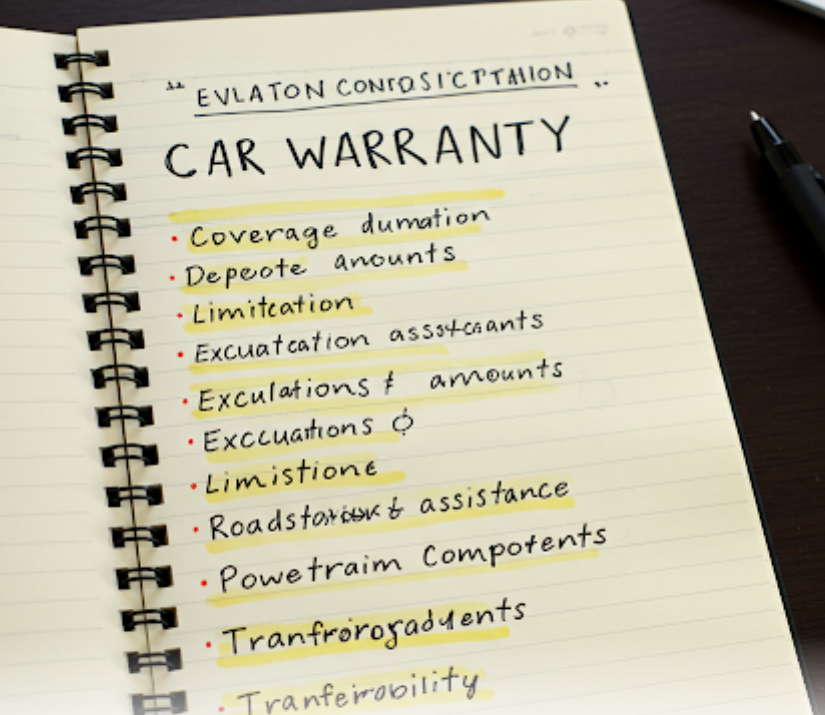
Key Considerations for BEV Warranties
Mileage vs. Time Limit: Pay close attention to whether the warranty has a time limit (in years) or a mileage limit, and understand which one will likely be reached first based on your driving habits.
Component Coverage: Clarify exactly which parts of the powertrain (motor, inverter, gearbox if applicable) and battery system (modules, management system, thermal management) are covered.
Exclusions: Be aware of what voids the warranty. This often includes damage from accidents, improper charging (using non-approved chargers or outside recommended voltage).
Take Care: Some of the major manufacturers, especially KIA, will say that your warranty is invalid if you have not adhered exactly to servicing schedules. My own experience was that for a 30,000km service was carried out at 30,032km and KIA confirmed that I had invalidated the 7 Year warranty.
Battery Health Checks: Some manufacturers, like Toyota with their Battery Care Program, offer extended battery coverage beyond the standard warranty, contingent on annual battery health checks performed by authorized dealers. This can provide longer peace of mind.
SmartGrandads Next Easy BEV Guide
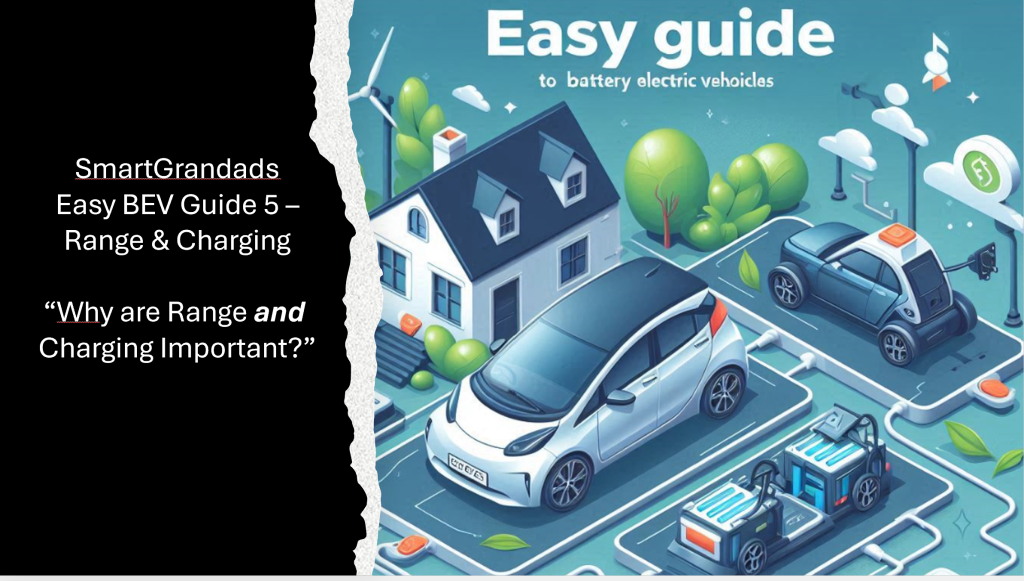
In SmartGrandads “EASY BEV” Guide 5,
to be posted soon, I will cover some practical advice and what to take into consideration regarding BEV “Range & Charging”.
Future SmartGrandad BEV Guides will be covering factors like Prices & Depreciation, ….
So, keep your eyes open for when the next SmartGrandad “Easy BEV” Guide is posted.

